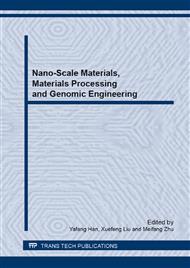p.554
p.560
p.566
p.574
p.580
p.587
p.593
p.599
p.603
Prediction Model for Adhesive Thickness-Dependence of Bonding Structures for Aeronautic Lightweight Alloy
Abstract:
In the present research, the influence of the adhesive thickness on the cohesive properties and the overall strength of metallic adhesive bonding structures were investigated with the cohesive zone model to equivalently simulate the adhesive layers with various thicknesses. A theoretical approach was developed to determine the cohesive parameters for the present model when the adhesive thickness varied. And then some numerical examples were given to explore the adhesive thickness-dependence overall strength of the adhesive joints, followed by the comparison with the existing experimental results. Furthermore, the variations of both the cohesive parameters and the overall strength with the various thicknesses were influenced by the ductility of adhesives, which were investigated finally. The results showed that both the cohesive parameters and overall strength of metallic adhesive bonding structures were dependent on the adhesive thickness. Moreover, the variation of overall strength corresponding to brittle adhesive was more remarkable compared to that of ductile adhesive, especially in the comparatively small thickness range.
Info:
Periodical:
Pages:
580-586
Citation:
Online since:
April 2014
Authors:
Price:
Сopyright:
© 2014 Trans Tech Publications Ltd. All Rights Reserved
Share:
Citation:


